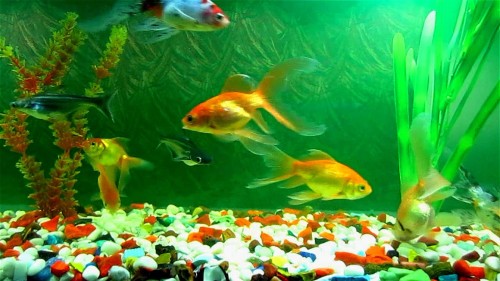
Ever had lice in your head? Only the people who had lice would know how irritating it is to deal with (and remove) them.
It takes time and effort to get rid of the awful lice from your head and same goes with the fish even though fish lice and human lice are completely different.
You may have heard or read that fish lice and leeches are quite uncommon infection among fish, but I personally don’t really think so. And what’s more, it is always best to prevent them in the first place rather than having to worry about the cure later on after the infection.
I am saying all this because I had my fair share of the trouble I had to go through. It all started the day when I found out that my pet goldfish had a lice infection.
I was just a newbie and little did I know about the fish disease. I could have made a few mistakes at the very beginning that made it end up in something unexpected. Yup! my fish died.
My first mistake could have been that I didn’t care about the quarantine method as I thought my fish were in good health.
The second mistake could have been that I had directly added the fish in the aquarium water and they got stressed because of the sudden change of the water temperature.
The third mistake could have been related to cleanliness. I admit; I was a little lazy. I used to change the water only when I thought that I absolutely had to.
And lastly I had no idea about using the test kit that measures the pH level of the water.
Basically, I don’t want you commit the same mistake and lose your adorable fish. I suspect now that it probably was the cleanliness factor why my fish died. But anyways, here is a little bit about the causes and symptoms of lice and leeches.
The main causes and symptoms
- If no proper hygiene is maintained in the aquarium, expect the fish to quickly catch the disease. Lice and leeches are those intruders that want a chance to get into the body of the fish. Change water on alternate days to keep it fresh and dirt free. Also, do not change the entire water. Maintain a ratio.
- You love feeding the fish right? How about removing the leftover food in the aquarium? Do not flinch when you see leftover food in the tank or else you will end up losing your fish. Always keep the aquarium clean and without food debris.
- Look for any infected fish. Leeches and lice can be contagious and can affect the healthy fish pretty quick.
- Lice would usually attach to the skin of the fish and form a disc shape. It may become hard to identify them as they sometimes look similar to the color of the fish.
- Leeches suck the blood of the fish. Yes, they are visible to some extent. Leeches are basically worms that contracts when touched. Parasitic leeches leave behind distinctive circular lesions on the fish’s body. These lesions appear sore and inflamed, and are frequently sites of secondary infection. Leeches do look like anchor worms to an extent. Anchor worms are thin, worm like crustaceans less than an inch in length. Leeches on the other hand are bigger.
- Fish suffer from anemia when leeches and lice attack them.

Common symptoms
- Lethargy is the first thing that you may notice among the fish. They might also stay aloof from other fish.
- Often fish would rub themselves against the walls of the aquarium to get rid of the lice and leeches. When you see them doing this, you should be sure that they are infected.
- Fishes lose the shine on their body and look extremely pale.
- You will also find redness and inflammation on the affected area.
You should be able to judge the disease or the infection by the clear symptoms of the fish. The only thing you need to do is to keep a close watch on them.
Treatments
Well, treatment is not that difficult, but should be done at the earliest stage of infection.
- A tropical antibiotic ointment can be used to treat the infection. These ointments are easily available at the fish stores.
- You can additionally pull off the worms with the help of the tweezers. But wait! You need to be very careful when you do this. This is because leeches have half part of their body inside the skin of the fishes and the other half outside. If you don’t pull out properly, chances are that the head of the leech would get stuck in the fish’s body. Consult the vet if you are not confident.
- Use aquarium salt bath to kill all the germs from the tank. Make sure that each and everything is sanitized. Take note of the gravels, pebbles, filter to get rid of the parasites, eggs, etc.
Did your fish ever suffer from lice and leeches? How did you treat them? Don’t forget to comment below. We would love to hear from you.






